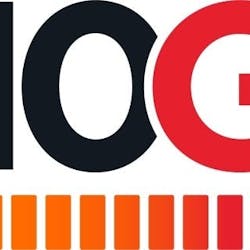In a decade or so down the line, experts looking back likely will say that 2012 was the year cable operators and the rest of the telecommunications industry pivoted from basic "get it out there" multiscreen platforms to those that work with a far higher level of precision and efficiency. That's the plan, at least. What happens remains to be seen. What is clear is that the industry is poised to take several important steps beyond the "one off" catch-as-catch-can approach that has dominated to date. "The year 2011 saw most -- if not all -- the major service providers world-wide investigating adaptive streaming, ranging from lab investigations to highly publicized deployments," wrote Yuval Fisher, chief technology officer of RGB Networks in response to emailed questions. "The market has matured quickly, with operators' expectations quickly rising from the initial 'help me just see how this works' to 'I need high video quality, high-availability equipment.'" As the name implies, the concept behind adaptive bitrate streaming (ABS) is to send the highest possible amount of data to an end user device within the context of the type of device, network conditions and other factors. Data is sent in variable length "chunks," or segments, that at most are several seconds long. The various bitrate options are organized into a set of profiles. The profile of each succeeding chunk is determined by the client. Sending a high definition (HD) video to a tablet on a relatively sparsely used network would utilize a more aggressive profile than the profile used to send a standard definition (SD) video to a smartphone over a crowded network. Currently, the bad news for those who want a smooth deployment of ABS is that there are three main platforms: HTTP Live Streaming (HLS) from Apple, Adobe Dynamic Streaming for Flash and Microsoft's Smooth Streaming, which is part of Silverlight. Thus, an operator wanting to stream video to iPhones and Windows Phones, for instance, would need to support two platforms. Though it is not quite as bad as it seems -- the three use HTTP and share much underlying infrastructure -- there still is a clear level of inefficiency. Matt Smith, the vice president of Internet television for Envivio, puts the commonality at about 80%. One of the key issues in 2012 will be addressing the ABS silo challenge. Early last month, MPEG (the Moving Picture Experts Group) -- which is run by the Organization for Standardization (better known as ISO) and the International Electrotechnical Commission -- announced ISO/IEC 23009, which is aimed at taming this confusion, has been approved as a draft standard. The standard is better known as dynamic active streaming over HTTP, or MPEG-DASH. The potential of MPEG DASH is to simplify things. "MPEG-DASH is vendor neutral," said Eric Quanstrom, the COO of Sorenson Media. "It actually was written by a Qualcomm engineer. The goal is to eliminate dependency on the three big technology companies that have their own agenda and roadmaps." Aside from the core technical parameters of DASH, there will be the usual questions of which major vendors support it and which hold out in hopes of seeing their intellectual property play a more central role. The bottom line is that the jury still is out. "As a technologist, I'm excited about what DASH offers," Smith said. "I'm a little concerned that it becomes just another checkbox and that we [only] add complexity." That concern is shared by Wowza Media Systems' Chief Marketing Officer Alex Dobrushin. "I don't think there is going to be a resolution in the next 12 months," he said. "We all hope DASH is the answer, but it was just ratified, there are no real viable commercial deployments. Any new standard takes a while to settle." A related issue to watch during 2012 is how deeply security is integrated into the overall ABS hierarchy. Smith said ways are found today to protect programming, but that content owners at some point in the near future will push for more robust integrated end-to-end digital rights management (DRM) functionality. Though precise details haven't been worked out, he said, one of the attractions of DASH is that some form of DRM will be a core element. A third driver of DASH is the gradual uptake of HTML5 as the way in which browsers present audio and video. Earlier versions of HTML relied on external tools -- such as Adobe Flash players -- to present multimedia content. That approach will be phased out in HTML5 in favor of integrated streaming support. A consistent approach, such as DASH, is an important step in streamlining this process, Dobrushin said. While these and other important issues will be worked on during 2012, they clearly won't be answered. Sam Blackman, the CEO, chairman and co-founder of Elemental Technologies, said during 2012 the transition from H.264 to H.265 video compression will begin. He said the draft standard from the IOS/IEC and International Telecommunication Union-Terrestrial (ITU-T) will be released early in the year. That standard, which is intended to reduce the number of bits necessary to achieve a specific resolution by as much as half, will be a key in bringing ABS to IP-enabled TV sets. Few answers will be apparent during 2012, but it appears that many of the important questions will be posed. It will be, in short, a transitional year in which cable operators begin making multiscreen more efficient and thereby improve monetization. "I think fundamentally the transition from legacy to IP video networks is just beginning," Blackman said. "Over the next few years, everything will transition to IP based on ABS standards. [It will lead to] the restructuring of every pay TV network infrastructure in the world."Carl Weinschenk is the Senior Editor of Broadband Technology Report. Reach him at [email protected].






